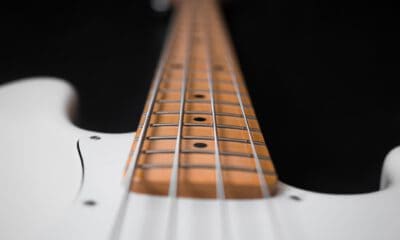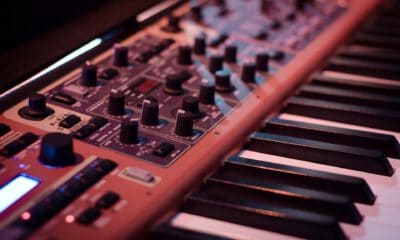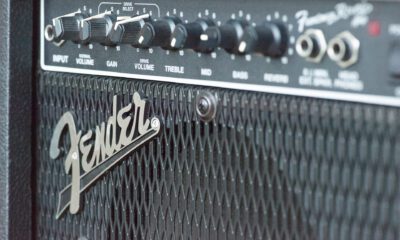Home Recording
Do You Need a Graphics Card for Music Production? Explained in 2 minutes

Graphics cards are the most sought-after component in computers at the moment. Sometimes you pay more than double or triple the normal price for a good graphics card.
Of course, the question now arises whether you also need a graphics card for music production.
Do I need a graphics card for music production?
Graphics cards are needed to display any kind of images on computers. That’s why you need a graphics card for the digital production of music, because otherwise you won’t be able to see the program itself or, for example, effects. However, you don’t need a high-end graphics card for your music production.
Of course, this is just the short answer.
If you want to know more about what exactly the graphics card does for your music production, what else is important when putting together your technology and how you can save a lot of time and money with the technical components alone, you’ve come to the right place.
Graphics cards and why I need them for my music production
The first question is why exactly you need a graphics card for music production in the first place.
Graphics cards are needed to display any kind of visual content on your computer. So it is mandatory for you to have a graphics card if you want to play and display images and videos on your computer.
You may be asking yourself, “I want to produce music, I don’t need pictures and videos, do I?”
The simple answer: yes, you do. Of course, you produce music with your music program first, but your music program itself is graphically designed.
All you see in the program interface are pictures and videos. For this reason, you inevitably need a graphics card to produce music.
Not all graphics cards are created equal
If you’re looking for the best graphics cards, you’ll quickly notice how expensive they are. That’s why we’re going to take a look at what kind of graphics card you should have for producing your music.
First of all, you need to know that your computer always has a graphics card installed. (Even if they are not strong in Workspace PCs, for example).
However, since you almost never have really demanding tasks for which you need a powerful graphics card, the graphics card you already have is actually sufficient for almost everything.
Now, of course, the question is: When do I need an (even better) external graphics card?
You should buy an even more powerful graphics card when you have workflow problems with your current one.
For example, if long waiting times annoy you, this could be due to a lack of graphics performance. Of course, it makes sense to invest in an even better graphics card in this case.
When does it not make sense to upgrade your graphics card?
This answer is also quite simple. It doesn’t make sense to buy a better graphics card if the performance of your current one is completely sufficient. If you don’t have to deal with loading times at all and everything loads almost immediately, then you don’t have to upgrade.
Tip: An upgrade always makes sense if it has a positive effect on your workflow. However, if you don’t notice any improvement (either the same result in less time or better results in the same time), you shouldn’t upgrade. Then it’s a waste of money to invest in better equipment.
Before we look at what other components you should also pay attention to, let’s first ask what are the main uses of the graphics card in music production:
What are the tasks of the graphics card in music production?
As mentioned earlier, one of the tasks of a graphics card is to display your music program in the first place. Beyond that, however, graphics cards have a few other tasks that we’ll take a look at now:
If you work with digital recording programs such as Ableton, Pro Tools, Logic Pro, for example, you can change your recordings in the processing afterwards with so-called digital signal processors.
If you want to take a detailed look at signal processors, you can click here.
The signal processors are often very graphics-intensive tasks for which you need a good graphics card.
To give you a better idea, here are a few examples of effects and why they require a lot of graphics power.
Equalizer
Here you can adjust the volume for different frequency ranges individually. For example, if you’re working on a classical piece of music, you’ll want less bass than if you’re working on modern hip-hop and trap music, where you’ll probably want to make the bass louder.
Most programs offer to show you the effect (+ the resulting treble) directly graphically in real time. So if you make the treble louder, you’ll see it graphically when listening to the music that the treble is louder than the bass. (Of course, it’s the other way around, but in principle it’s the same).
Of course, to display all the effects, one thing is needed: Graphics power. But I can reassure you, because the necessary power can be provided by almost any PC.
Limiter
Here the volume of a recording is limited to a certain level. If you try to limit the volume of a recording in the music program of your choice, you will hear it immediately.
At the same time, however, you have the option of displaying, for example, a representation (including) level in real time. Here, too, your computer needs graphics power, but the required power is so low that you won’t have a problem with any reasonably modern computer.
Compressors
This is another very common effect where you can see the effects graphically, but again, the graphics power required is very low, so you won’t have many problems.
As you can see, graphics performance is not a problem with any of the effects per se. But what happens when you want to open all the effects at the same time (and maybe on a second monitor?).
The more effects you have to display at the same time, the more graphics power you need. It’s a similar story with a second monitor. All in all, the demand for graphics performance will increase significantly, so that it can now make sense to invest in a better graphics card.
Now that we’ve looked at the connection between your graphics card and your music production, let’s answer the question of what other components you should have in mind (some of which are even more important to you).
RAM
Even more important than the graphics card is the RAM.
But what is RAM and what do you need it for?
With RAM you store all programs, projects and applications at the moment they are executed.
So if you have 100 tabs open on Google, and you’re editing a movie at the same time, you’ll obviously need more RAM than if you only have a single tab open (and do nothing else.)
To give you a better overview, most programs have public minimum RAM requirements. Here are the minimum requirements of the most commonly used music production programs:
- Logic Pro (Apple): 4GB (MacOS)
- Ableton Live: 4GB (Windows + MacOS)
- Pro Tools: 16GB (Windows + MacOS)
In general, you need to know that there is no limit to RAM. The more RAM, the faster applications can run (under certain conditions).
Processor
The processor is the heart of your computer.
It organizes the applications of all other components. So it is also important to ensure a good interaction between graphics card and processor.
Tip: A good graphics card is capable of relieving your processor of many computationally intensive tasks.
To get a better understanding in general, you can watch the following video:
What should my setup look like now?
Putting together the right setup is of course partly a very hard question, as it is very budget dependent, but in general there are some tips I would like to give you along the way:
1: Hard drives: Make sure you use fast hard drives. Your computer is only as fast as the weakest part. It’s no use if you have top technology, but your hard disks can only write 1MB per second.
2: Hard disks (prices): Pay attention (especially with Apple products) if you really want to have internal memory. Portable SSDs are a cheaper alternative and save you a lot of money. (Internal hard drives can cost more than twice as much as external SSDs.) If you want to know where you’ll end up circa price-wise, you can look here on Amazon.
3: Processors: Make sure you have the most powerful processor possible. At the same time, make sure that your processor is only as powerful as the components around it.
4: Processor (price): Make sure your processor matches the other components. If you’re using an insanely good processor but otherwise mediocre components, all that power won’t do you any good at all. If you want to know where you’ll end up in terms of price, you can look here on Amazon.
5: RAM: Make sure you have as much RAM as possible. You’ll find that this actually has an extreme impact on your workflow, as (with lots of RAM) you can run virtually infinite things at once. This allows you to get a lot more done in a lot less time. If you want to know where you’ll end up in terms of price, you can look here on Amazon.
6: Graphics cards: Now we come to the graphics cards. As you can see, a lot of other components play a role. However, if you want to have a graphics card to improve your workflow even more, there’s nothing to be said against it. If you want to know where you’ll end up in terms of price, you can look here on Amazon.
7: What about the Apple “M” chips? For example, if you have a MacBook with an M1 chip, you basically have a graphics card integrated into the processor. If you use Apple’s “M” chips, you don’t necessarily have to use an external graphics card.
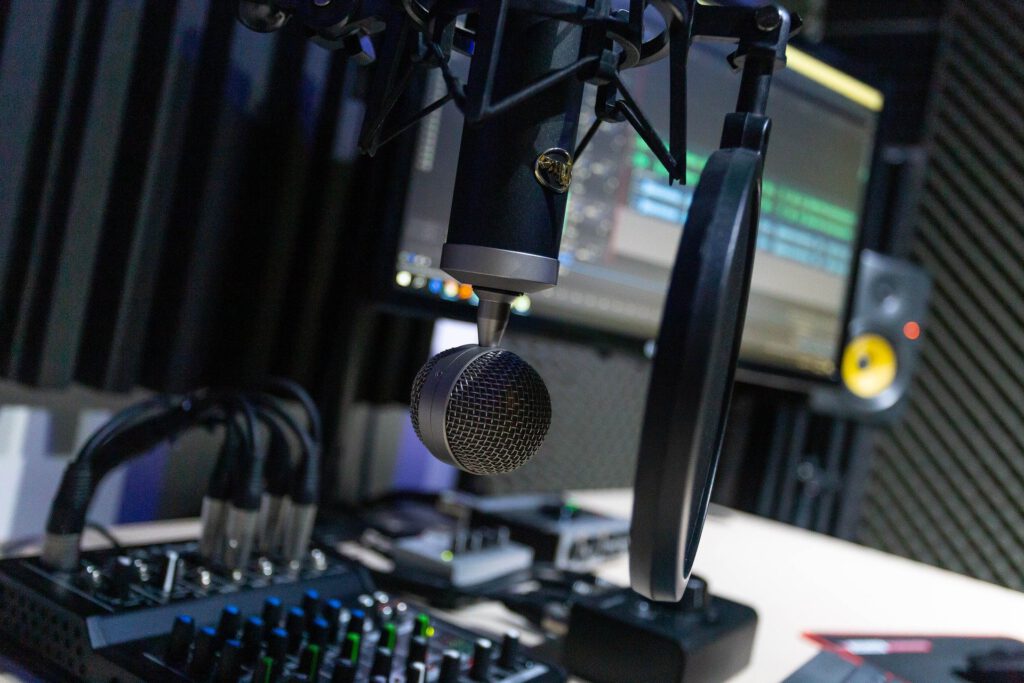
Conclusion: Do I need a graphics card for music production?
As you’ve learned in this article, it makes sense to have a good graphics card. At the same time, however, we’ve found that the right graphics card is only a small part of your setup, and your workflow depends on many different factors.
In general, it remains to say that your components should always be roughly equivalent in your technology. Superfluous power cannot be used, because a system is only as strong as its worst component.
So if you have a top processor, fast hard disks and a lot of RAM, it makes sense to also install a good graphics card.
Otherwise, you can rest assured: you definitely don’t need a high-end graphics card, since the production of your music doesn’t really require much graphics power.

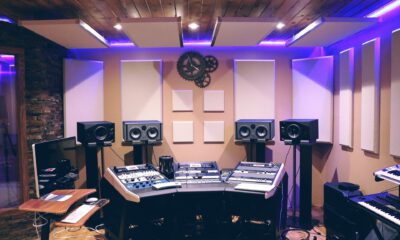
 Home Recording2 years ago
Home Recording2 years agoCan You Use Normal Speakers As Studio Monitors? The Simple Answer
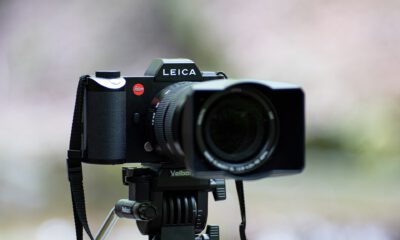
 Photography2 years ago
Photography2 years agoIs A Leica Worth It? (What you should know)
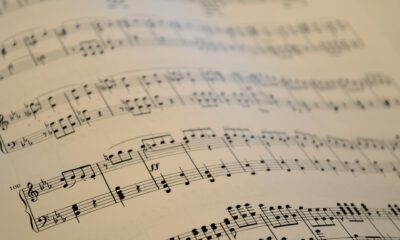
 Music Production2 years ago
Music Production2 years agoCan Piano Sheet Music Be Used For Other Instruments?
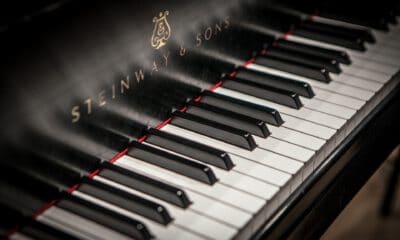
 Music Production2 years ago
Music Production2 years agoAre My Piano Keys Made Of Ivory? (How To Recognize It)







